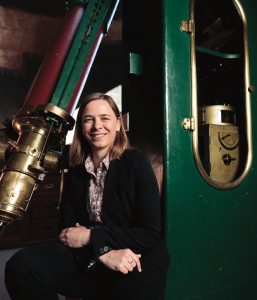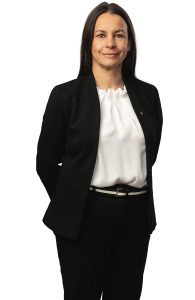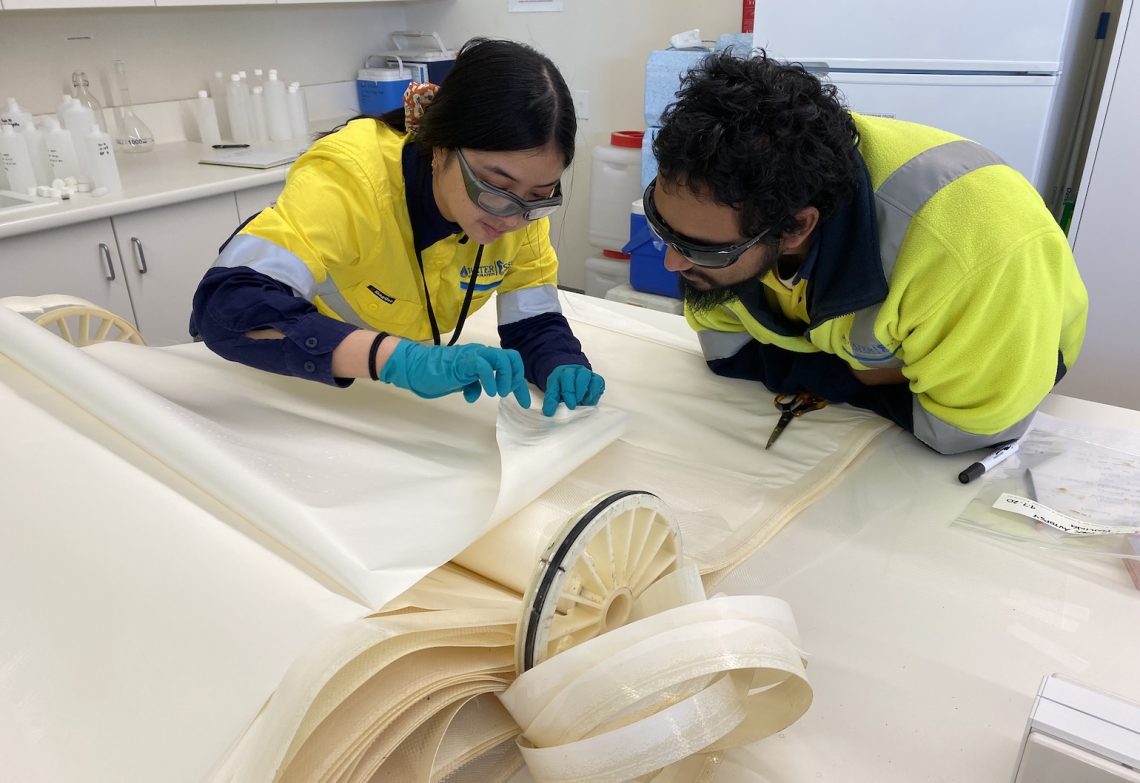Women make up 48 per cent of Australia’s workforce, yet account for just 13 per cent of the nation’s working engineers. New research sheds light on the barriers that discourage women from entering the profession — and how to overcome them.
When biomedical engineering student Tessa Hancock was finishing high school, a family friend suggested that, since she “loved everything science” and finding out how and why things work, she study engineering.
But to Hancock, engineering only meant building roads and bridges. She chose to study science instead.
“I had no idea what [being an engineer] involved and had only heard of civil engineering,” Hancock says.
“It was only after I graduated from my science degree that I found out about biomedical engineering. I applied immediately and I’m now halfway through, but I really wish I had started it straight after school.”

Hancock isn’t alone in dismissing a career in engineering while still at school. Research commissioned by Engineers Australia found most girls don’t consider it an option — even those who pursue careers in other STEM fields.
Released this month, the research aims to identify the motivators for women choosing to study engineering, the barriers to participation in the profession and the initiatives that could improve outcomes. It surveyed female and male engineers and non-engineers who were either students or in their first 15 years of work.
The findings were clear: girls don’t know enough about engineering to decide to pursue it, says Engineers Australia’s Chief Engineer Jane MacMaster FIEAust CPEng.
“Our research has shown that the single biggest barrier to girls choosing to study engineering is a lack of familiarity with what engineering is and what engineers do,” MacMaster says.
“The most important thing we can do is to work to increase that familiarity.”
Raising awareness

As the Australian Government’s Women in STEM Ambassador, Professor Lisa Harvey-Smith believes it is extremely important to attract more women into engineering. But even she wasn’t aware of it as a career choice as a high school and university student.
“I don’t think I’d even heard of engineering when I was a kid. From the age of 12 I wanted to be an astrophysicist, probably because there were a lot of role models on TV, in books and popular culture,” she says.
“Engineering didn’t really enter my consciousness until well after university, when I worked with engineers to create new technologies for next-generation radio telescopes.”
Harvey-Smith says more women must be included in the profession both for diversity reasons and to address potential workforce shortages.
“Engineers create the future. If solutions are designed from a monocultural perspective, there is no way that they will adequately serve society,” she says.
“Engineering is also a very in-demand profession in Australia, yet we import around half of our skilled engineers from overseas. We also have the most highly educated cohort of women in the world and utilising their talent in engineering is an efficient way to fill the gap.”
Storytelling is key to raising awareness of engineering as a viable career choice for girls, MacMaster says. This includes everything from female engineers giving presentations in schools to organisations using social media platforms such as TikTok to reach younger audiences.

“We know that sharing stories about engineering work with young people in your friendship and family circles is really powerful … Anything female engineers can do is important, for example speaking at schools or working with your organisation to develop internships,” MacMaster says.
“We need to target four main groups: school children, their parents, their teachers and careers advisors. If parents aren’t aware of the breadth of exciting career opportunities in engineering, they’re less likely to make their kids aware of it.”
Changing perceptions
One of the most common sources of exposure to engineering — for both men and women — is having an engineer in the family. But this doesn’t guarantee a clear picture of the profession.
University of Western Australia graduate Michelle Foo, whose father is an engineer in the oil and gas industry, chose to study engineering after a “process of elimination”.
“I knew that out of all the subjects I did, I liked maths and science the most,” she says. “I didn’t want to rely on my memory, so anything regarding medical sciences was out of the question, and so I ended up picking engineering.”
Foo, a Graduate Environmental Engineer at WA’s Water Corporation, had a “limited understanding” of the profession from her father’s work. But it wasn’t until she got involved with Engineers Without Borders (EWB) during her first year of university that she realised the potential of an engineering career.
“All I knew was oil and gas and buildings and bridges,” she says. “I didn’t think that engineering could be used for altruistic means and to serve the community and the environment. EWB was the crux of my self-discovery and is why I’m really passionate about engineering … The altruistic side is what has kept me interested in my work.”
The impact engineers can have on society is often overlooked by students, according to the research, which found that engineering is seen as much less impactful, fulfilling and exciting than other STEM professions such as biology and medicine. Women also reported seeing the profession as “male-dominated” and “challenging”.
Attracting more women to engineering requires addressing their key drivers, which the research identified as fulfilling work that matches their personality and interests, as well as salary expectations, job prospects and a good work–life balance.
“Engineering is a profession that allows you to contribute to making the world a better place, and I think that broad objective really resonates with a lot of women,” MacMaster says.
“We also need to focus on how creative it is, more so than ever because a lot of the challenges we face are very complex, which means it’s not easy to come up with solutions.”
Communicating the game-changing nature of engineering work, as well as the myriad career paths available, is vital to attract more girls to study it, MacMaster says.
“You can work as a humanitarian engineer; a crisis response engineer; an electronics, electrical, structural, mechanical or civil engineer. You can align yourself with the main disciplines or with new and exciting research areas.
“Once you’re trained as an engineer, it’s a very rewarding profession and very secure. There’s almost no limit to the type of role you can have — the biggest challenge is identifying where your interests lie.”
Early education
With more than 90 per cent of girls “set on” or “moderately set on” a field of study before starting year 11, it is important to start promoting engineering early.
Less than one in five respondents who participated in Engineers Australia’s research said they remembered attending an in-school talk by an engineer. Similarly, few reported attending engineering-based university excursions or school information sessions.
This reveals an opportunity to promote engineering by rolling out relatively simple initiatives in schools. Talks and excursions also have the benefit of being able to reach large groups of both female and male students, and are likely more feasible in the short-term than initiatives that aim to change the entire system.
Girls must also see engineering as an appealing career option before reaching the last years of high school to ensure they select the subjects needed for admission into an engineering degree — typically maths, physics and chemistry.
This means arming teachers with the skills needed to promote STEM subjects from primary school up, says Harvey-Smith.
“Students meet engineering at school, but so often it is badged as ‘science’ or ‘design and technology’,” she says. “We need to equip teachers with the knowledge and resources to name engineering where it is taught — and to explain the many and diverse engineering career paths to parents and teachers.”

This is something maths teacher Courtney Freebody, Leader of Learning and Technology at Mater Dei Catholic College in Wagga Wagga, New South Wales, is incredibly passionate about.
She says that while boys are usually quick to put up their hands when it comes to engaging in STEM-based activities, her female students are often more hesitant.
“Our girls tend to steer clear of higher-level science and mathematics,” she says.
“I see it all the time — girls will say they couldn’t possibly do advanced or extension maths in year 11 and 12. I say to them, ‘of course you can, you just need to realise you’re actually very good at it’. I don’t think they hear that enough from teachers.”
The numbers back this up: in NSW, only 1.5 per cent of girls take advanced maths, physics and chemistry in high school.
While an aptitude for these subjects is important, being “good” at them is enough — it is not necessary to get top marks in every class in order to pursue engineering.
This is an important point, as another barrier to engineering reported by the research was concern about not being good enough at maths and physics.
Women in engineering careers overwhelmingly (91 per cent) say they excelled at STEM subjects in high school, compared to just 59 per cent of women in other fields, and 77 per cent among women in science.
Harvey-Smith says the low numbers of women in the profession is “purely a cultural phenomenon”.
“Engineering is seen as a natural career path for women in many parts of the world. For example, in India and China a majority of STEM graduates are women,” she says. “The lack of women in engineering in Australia can be fixed by changing attitudes and practices in educational settings and workplaces.”




Hello Ruth
Thank-you for your article.
I am a woman and I graduated as a Civil Engineer at the age of 51 in 2019.
I am now working as a Graduate Civil Engineer as of March 22. I have been told (by others not the people who employed me) that I got this job because companies were desperate for workers.
The road has been very hard as a woman in engineering particularly studying and trying to break into this industry.
I started studying Civil Engineering drafting. I felt very isolated when I was studying this. Many of the other students were guys, many didn’t want much to do with me. Yes, there were people who were friendly and that I made friends with. But many of the students were dismissive. Some openly hostile. Some even spreading rumours. We were located on the 5th floor of a building and many times I wanted to throw myself over the balcony due to the experiences I was going through.
It could have also been the people in my year. The intake of the year after me I have heard was pretty friendly.
After graduating I was not able to find work so I went onto the full Civil Engineering Degree. Similar response but there were other students and teachers in University who were friendly helpful and supportive. I don’t want to forget them. But there was a level of hostility too. After graduating I found it hard to find work. Note, in the jobs that I did have there were supportive people. And I would say that it was these people that helped me get work.
I am sorry if I am sounding negative. But this is my experience of this industry as a woman.
Your article is called “The road less travelled” and there is a reason it is less travelled by women.
You also mention campaigning schools for more girls to go into this industry. I think you are limiting yourself if you are only campaigning in schools.
I remember working on a site where there was traffic controllers. One of the women traffic controllers (in her 40s) wanted to know how to become a site engineer. She was pretty keen and I hoped that she eventually did decide to become a civil engineer.
If you want more women in this industry maybe we could start there?